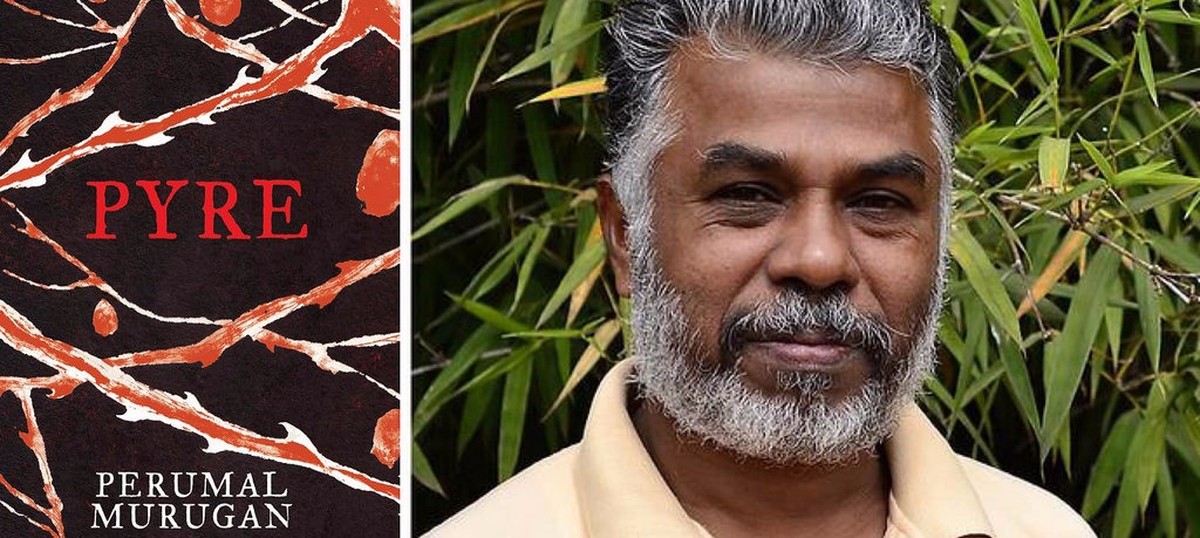Pyre is a story of every inter-caste married couple in rural India. The book keeps the readers stuck to the story by talking about the harsh realities of the society. The title Pyre creates a sense of curiosity. Perumal Murugan’s Pyre is a story about Saroja and Kumaresan, a couple in love who marry each other. They belong to different castes and it eventually becomes a curse to their life. The couple bears the wrath of Kumaresan’s village in the hope that things will get better.
Author: Perumal Murugan
Publisher: Penguin Publishers
Genre: Fiction
The book highlights the struggle of inter-caste couples and how it is difficult to survive such marriages. The book revolves around the love story of the couple, how they met, how they fell in love and why they choose to elope. From a gendered lens, the book covers the struggle of protagonist Saroja since the beginning of her marriage. She had been called names, slapped and taunted every day, yet she chooses to stay silent in order to stay safe. The book also fails the Bechdel test as all the women characters talk about her husband in one form or another and their lives are written around Kumaresan.
from a gendered lens, the book covers the struggle of protagonist Saroja since the beginning of her marriage. She had been called names, slapped and taunted every day, yet she chooses to stay silent in order to stay safe.
Another factor that compromises the effectiveness of the story is the male gaze while writing women characters or describing the affection among Kumaresan and Saroja. Overall, the book covers the issue of honor killing and casteism through different events like people getting violent, socially excluding the couple and their family, etc.
The book also captures the internalized misogyny of rural women when it comes to maintaining the existing social order. Saroja had been called slurs on a daily basis. It is usually the women who are calling her names, asking her what she did to “attract” Kumaresan, coming with the age-old “she must have cast a spell on our boy“-narrative which label women as witches and seductresses. The first woman Saroja met was her mother-in-law, Marayi and she becomes her worst nightmare.
The protagonists Kumaresan and Saroja aren’t strong characters. Kumaresan listens to everything said by villagers silently most of the time. He gets beaten up, bears insults made to his wife by village folk, yet asks Saroja to never speak up. He also never informed Saroja about his life before their marriage. Where he lived, how the situation can get and what will be the conditions that Saroja might face after marriage was never told to her. The only strong thing about both of them is listening to their heart, marrying each other and standing by each other’s side.
Saroja as a character has been seen as an obedient, helpless woman who followed her husband just to stay safe as she knew nothing about the new place. She never talks back to her mother-in-law who is downright abusive since the day she met her.
Saroja as a character has been seen as an obedient, helpless woman who followed her husband just to stay safe as she knew nothing about the new place. She never talks back to her mother-in-law who is downright abusive since the day she met her. Saroja is afraid of her. She couldn’t express her problems with her husband clearly as she thinks he is already stressed. She prioritizes him over herself and stays mum. Kumaresan also ignores her requests for taking her back to her town when she gets suffocated and tired of the insults and misbehavior of the people around her.
Also read: Book Review: Gaysia–Adventures In The Queer East By Benjamin Law
However, in contrast with Saroja, Marayi as a character comes out as strong and unapologetic. She expresses her displeasure through anger, tears, and daily taunts. She chooses to yell, beat, murmur and shout as compared to Saroja, who suppresses her emotions. Marayi also manages to educate her son and make her basic ends meet after the death of her husband. Often, rural women are portrayed as helpless and Marayi breaks that stereotype. She also supports villagers when they promise her a solution to her problems. Yet, she is also an example of women following social norms and maintaining social order while dismissing their own children’s happiness. Marayi is not a black and white character like Saroja and Kumaresan. She is grey, she loves her son yet she is furious over his inter-caste marriage.
Overall, the story is continuous with good presentation, the series of events are realistic yet has a cinematic essence to them. Pyre can haunt its readers for some time as the book is chilling. The book is relatable to everyone, who has married against their parents’ wishes, the constant cold behavior, the lack of empathy and the feeling of being unsafe in one’s own home is common for such couples. It is an eye-opener for many who believe that caste-based discrimination does not exist. The book also reflects the culture of lower caste groups and their cuisine which is usually missing from the mainstream narrative.
Also read: 7 Books That Support Us Like Positive Female Friendships
Aniruddha Vasudevan has translated the book from Tamil without losing the essence of the story. The book Pyre is a work of fiction that portrays the reality of many urban and rural households that are destroyed by the patriarchal and caste-based order.
Featured Image Source: Scroll
About the author(s)
Meghna Mehra is the first asexual student leader of India. She is author of the book Marriage of Convenience and founder of All India Queer Association. A graduate in political science, she understands social issues from a gendered perspective.




